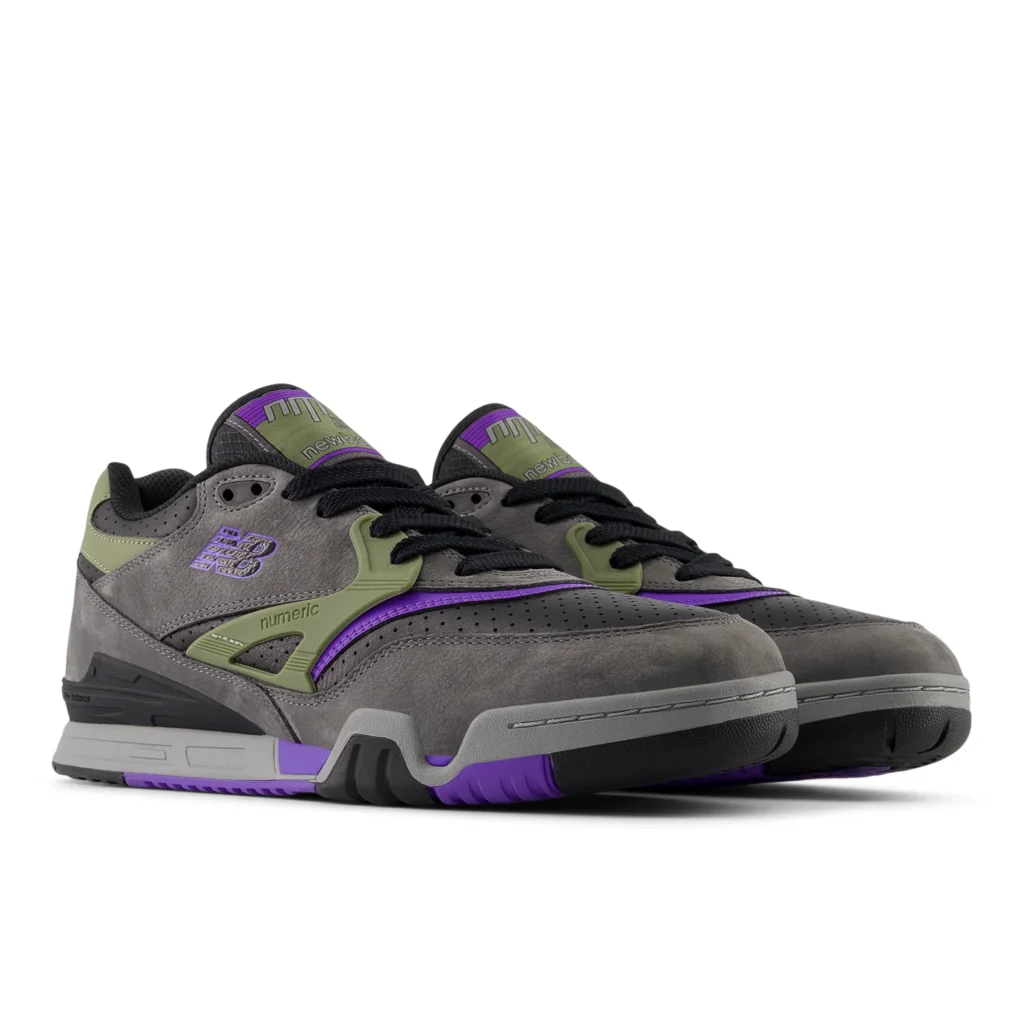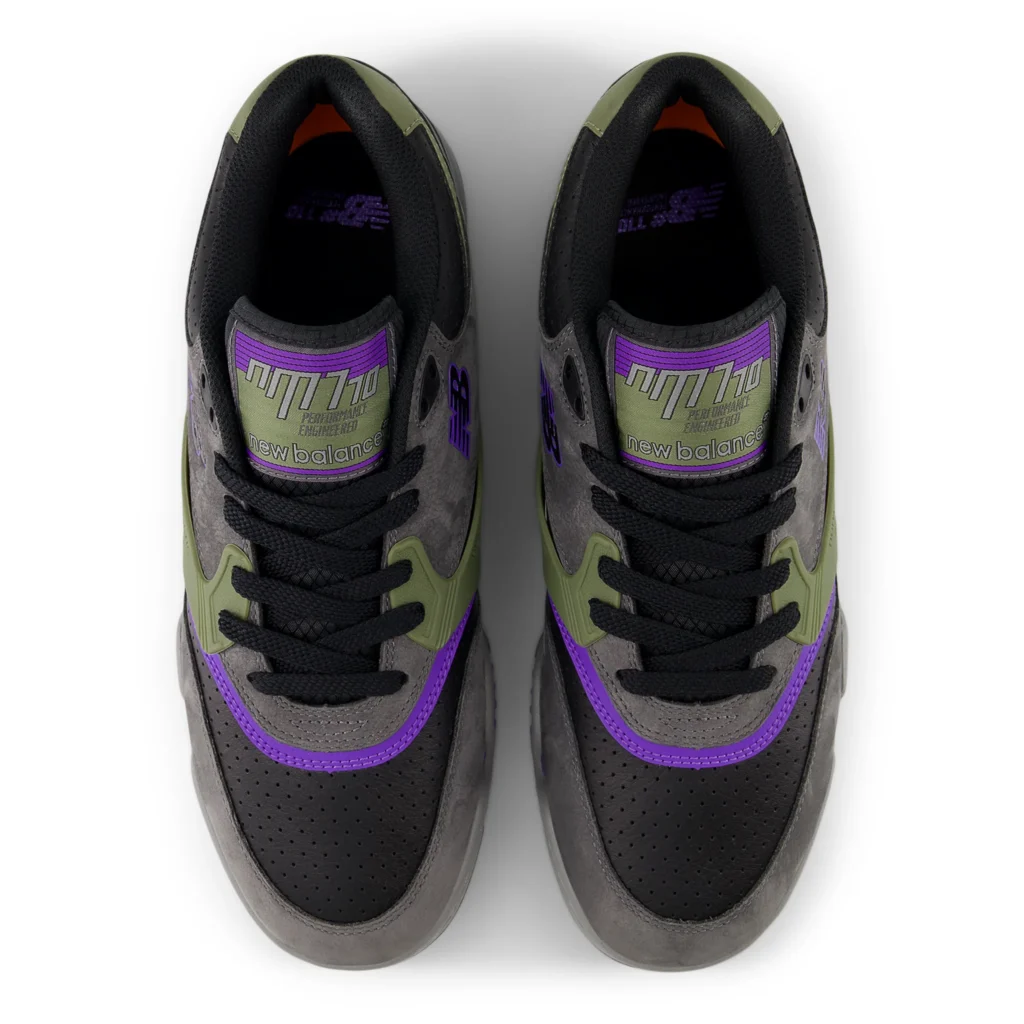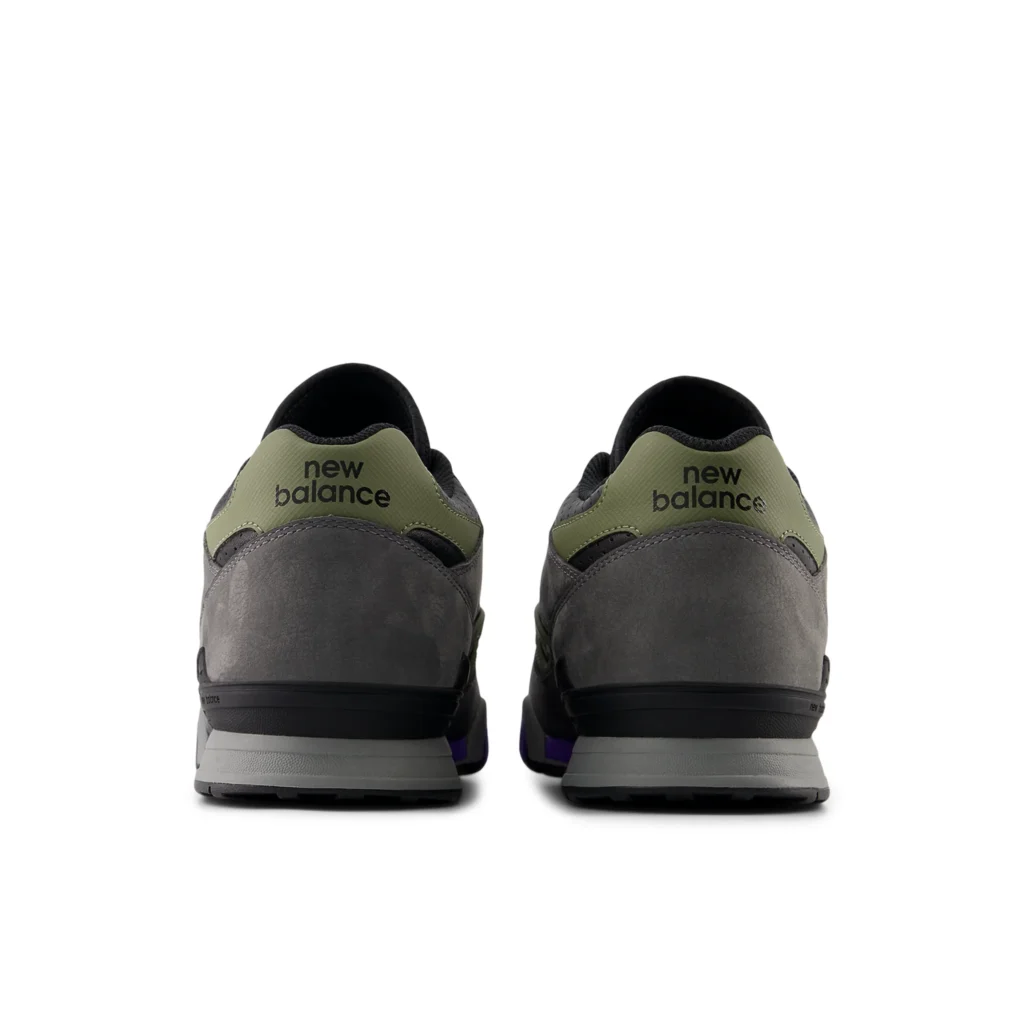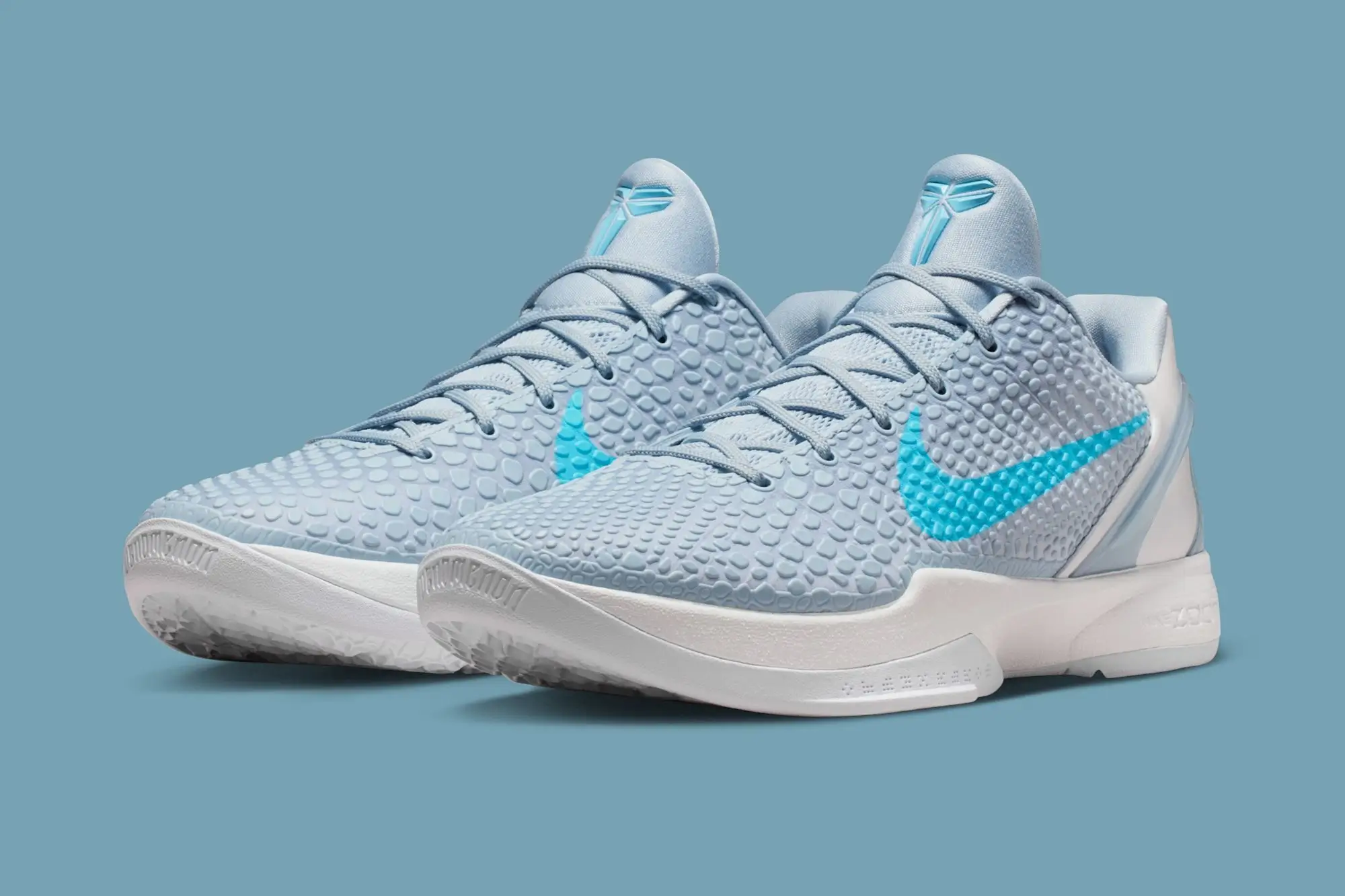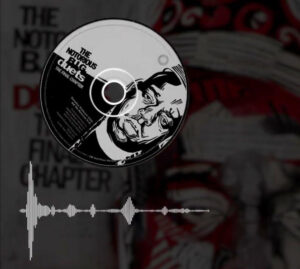From Tennis Courts to City Streets
Back in the early 1990s, New Balance was knee-deep in experimentation. The brand, long known for running excellence, sought to expand its influence into cross-training, tennis, and general athletic footwear. Out of that exploratory wave came the New Balance 770 — a court shoe designed to deliver exceptional stability, support, and performance. Quickly embraced by tennis players and athletes seeking a reliable trainer, the 770 became a quiet yet trusted staple of its era.
Now, more than thirty years later, New Balance is reviving that same spirit with a twist. Through its skateboarding arm, New Balance Numeric, the 770 is re-engineered for skaters who demand durability, board feel, and style that translates both on and off the deck. The Numeric 770 doesn’t just mine nostalgia; it shows how a heritage model can be adapted seamlessly for an entirely different subculture.
The Original 770: A Court Classic
When the 770 first appeared in the early ’90s, it was positioned as a versatile cross-trainer with a strong leaning toward tennis. Its defining trait was stability. At a time when performance shoes were beginning to chase lighter materials and streamlined designs, New Balance carved a niche with models that prioritized support, motion control, and long-term reliability.
For tennis players, that meant a shoe that could withstand hours of lateral movement and quick pivots without collapsing under pressure. Coaches and athletes praised its wide base, cushioned midsole, and grippy outsole — all hallmarks of what New Balance did best.
Unlike flashier competitors, the 770 was subtle in design. It carried the familiar New Balance “N” logo and a functional silhouette, speaking more to serious athletes than lifestyle consumers. Yet that understated style, paired with rock-solid performance, earned it a devoted following.
The ’90s Design Ethos: Exploration and Risk
The 770 emerged during what many sneaker historians now call New Balance’s exploratory era. This was a period where the Boston-based brand wasn’t afraid to experiment with form and function across multiple categories. While running remained the foundation, the company expanded into basketball, trail, and cross-training markets.
What made this period so rich was New Balance’s willingness to apply its performance DNA to unfamiliar territory. In the 770, you see the blending of tennis-ready durability with cross-training flexibility. It reflected the brand’s design philosophy of the time: build a shoe that can adapt to multiple disciplines without losing the core values of stability, comfort, and precision fit.
Enter New Balance Numeric: Skateboarding Meets Heritage
Fast forward to today, and New Balance’s skateboarding division, Numeric, is playing a similar role: experimentation within heritage. Established in 2013, Numeric was a bold move into a market historically dominated by brands like Vans, DC, and Nike SB.
Numeric has distinguished itself by fusing New Balance’s performance ethos with the needs of modern skaters. Models like the 440, 306, and 1010 have proven that skateboarding footwear doesn’t have to compromise between function and style. By re-engineering archival silhouettes for the skatepark, Numeric has found a formula that resonates with skaters who want shoes that can take a beating while looking sharp.
The decision to revive the 770 through Numeric continues that story — pulling from heritage but tailoring it for a new generation of athletes and subcultures.
View this post on Instagram
The Numeric 770: Design and Function
The reworked Numeric 770 maintains the DNA of its predecessor but updates nearly every element for skateboarding.
-
Stability Remains Central: The wide platform that once stabilized tennis players now anchors skaters grinding rails or landing flips. That broad, supportive base makes the shoe ideal for tricks that put heavy strain on ankles and arches.
-
Cushioning Reimagined: The court-shoe cushioning system has been updated with Numeric’s skate-specific insole technology, absorbing impact from jumps while retaining board feel.
-
Durability Upgrade: Tennis shoes needed abrasion resistance, but skateboarding is far harsher. The Numeric 770 uses reinforced suede and layered panels in high-wear zones, ensuring longevity even under heavy session use.
-
Outsole Grip: The tread pattern has been redesigned for grip on griptape, offering precise control without slippage.
-
Aesthetic Edge: Visually, the Numeric 770 nods to its ’90s roots — clean lines, layered paneling, and that unmistakable New Balance logo — but with modernized materials and skate-culture colorways.
Heritage and Adaptation: Why It Works
What makes the Numeric 770 such a compelling revival is its balance of heritage authenticity and functional reinvention. Skateboarding has always been a culture that values credibility — a shoe with real history carries more weight than a purely marketing-driven silhouette. By tapping into the original 770’s reputation for stability and dependability, Numeric gives skaters a product with proven DNA.
At the same time, the re-engineering ensures it doesn’t simply ride nostalgia. The Numeric 770 feels like it belongs in 2025 skate culture — tougher, sleeker, and tailored to the way people actually skate today.
Skate Culture Meets Tennis Heritage
The crossover between tennis and skateboarding may seem unexpected, but it works for one key reason: both sports demand precision of movement. Tennis players need stability to pivot and strike; skaters need stability to land tricks and absorb impact. Both require shoes that can handle lateral stress and unpredictable motion.
By remixing the 770, Numeric bridges two worlds that rarely overlap — and in doing so, it reasserts New Balance’s talent for adapting performance design across disciplines. The shoe tells a story: performance is universal, and heritage can evolve.
Cultural Significance: The ’90s Come Back Around
Sneaker culture in 2025 thrives on revivals. The ’90s aesthetic — chunky silhouettes, understated branding, utilitarian construction — has surged back into relevance. Skaters, who often draw from retro workwear and sportswear, find natural synergy with models like the 770.
Moreover, the Numeric 770 plays into broader trends of retro re-engineering. Just as basketball models like the Air Jordan 1 found new life in skateboarding, or tennis silhouettes like the Adidas Stan Smith became lifestyle staples, the 770 demonstrates how a performance shoe can transcend its original purpose.
The Future of Numeric and Revivals
The 770’s return under the Numeric banner signals that New Balance is committed to mining its archive with intelligence. Rather than blanket reissues, the strategy seems to be thoughtful reinterpretation — reviving models that make sense in new contexts.
For skaters, this is good news. It means access to shoes that not only look distinct from competitors but also embody real design lineage. For New Balance, it reaffirms the brand’s place in both heritage storytelling and performance innovation.
A Shoe That Bridges Decades
The Numeric 770 isn’t just a shoe — it’s a narrative bridge. It links New Balance’s 1990s era of experimentation with today’s skateboarding culture, proving that stability and craft can adapt across generations.
In the early ’90s, the 770 earned its reputation as one of the most stable tennis shoes of its time. Thirty years later, its DNA still holds value — not on clay courts, but on concrete streets and wooden ramps.
By remixing heritage through a skateboarding lens, New Balance Numeric reminds us that good design never really dies. It evolves, shifts context, and finds new relevance in unexpected places. The 770’s revival is more than nostalgia; it’s proof that stability, durability, and understated style remain timeless traits, whether you’re serving an ace or dropping into a half-pipe.
No comments yet.

